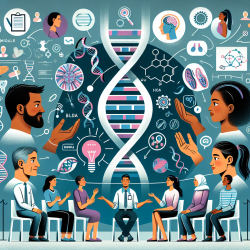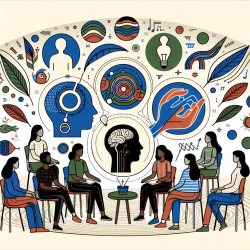Introduction
As practitioners dedicated to enhancing children's outcomes, it is crucial to stay informed about the evolving landscape of genetic modification and its ethical implications. The research article "From goodness to good looks: Changing images of human germline genetic modification" by Derek So offers valuable insights into how the discourse around genetic modification has shifted over time. This blog will explore the key findings of the study and discuss how practitioners can leverage this knowledge to improve their skills and contribute to informed discussions on genetic modification.
The Evolution of Genetic Modification Imagery
The research highlights a significant shift in the traits emphasized in discussions about human germline genetic modification. Historically, the focus was on enhancing traits such as intelligence and health, but more recent discourse has increasingly included cosmetic modifications. This shift reflects broader societal changes, including a greater emphasis on individual decision-making and the adoption of reproductive technologies like IVF and gamete donation.
Understanding this evolution is crucial for practitioners as it influences how arguments about gene editing are developed and perceived. Cosmetic modifications are often viewed more negatively and considered less relevant to an individual's identity, which can impact public opinion and policy decisions.
Implications for Practitioners
For practitioners in speech language pathology and related fields, the findings of this research offer several implications:
- Awareness of Shifting Narratives: By understanding the changing imagery of genetic modification, practitioners can engage in more informed discussions with colleagues, policymakers, and the public.
- Ethical Considerations: Practitioners should consider the ethical implications of genetic modification, particularly in relation to traits that may be perceived as less essential to identity.
- Advocacy for Comprehensive Discourse: Encourage a broader discourse that includes a wide range of traits and considers the potential impacts of genetic modification on individual identity and societal norms.
Encouraging Further Research
The study by Derek So serves as a call to action for practitioners to engage in further research and discussions on genetic modification. By exploring the ethical, social, and practical implications of these technologies, practitioners can contribute to a more nuanced understanding of their potential impacts on children and society as a whole.
Conclusion
As we navigate the complex landscape of genetic modification, it is essential for practitioners to remain informed and proactive in their approach. By understanding the evolving imagery of genetic modification and its implications, practitioners can better advocate for ethical practices and contribute to positive outcomes for children. To read the original research paper, please follow this link: From goodness to good looks: Changing images of human germline genetic modification.










